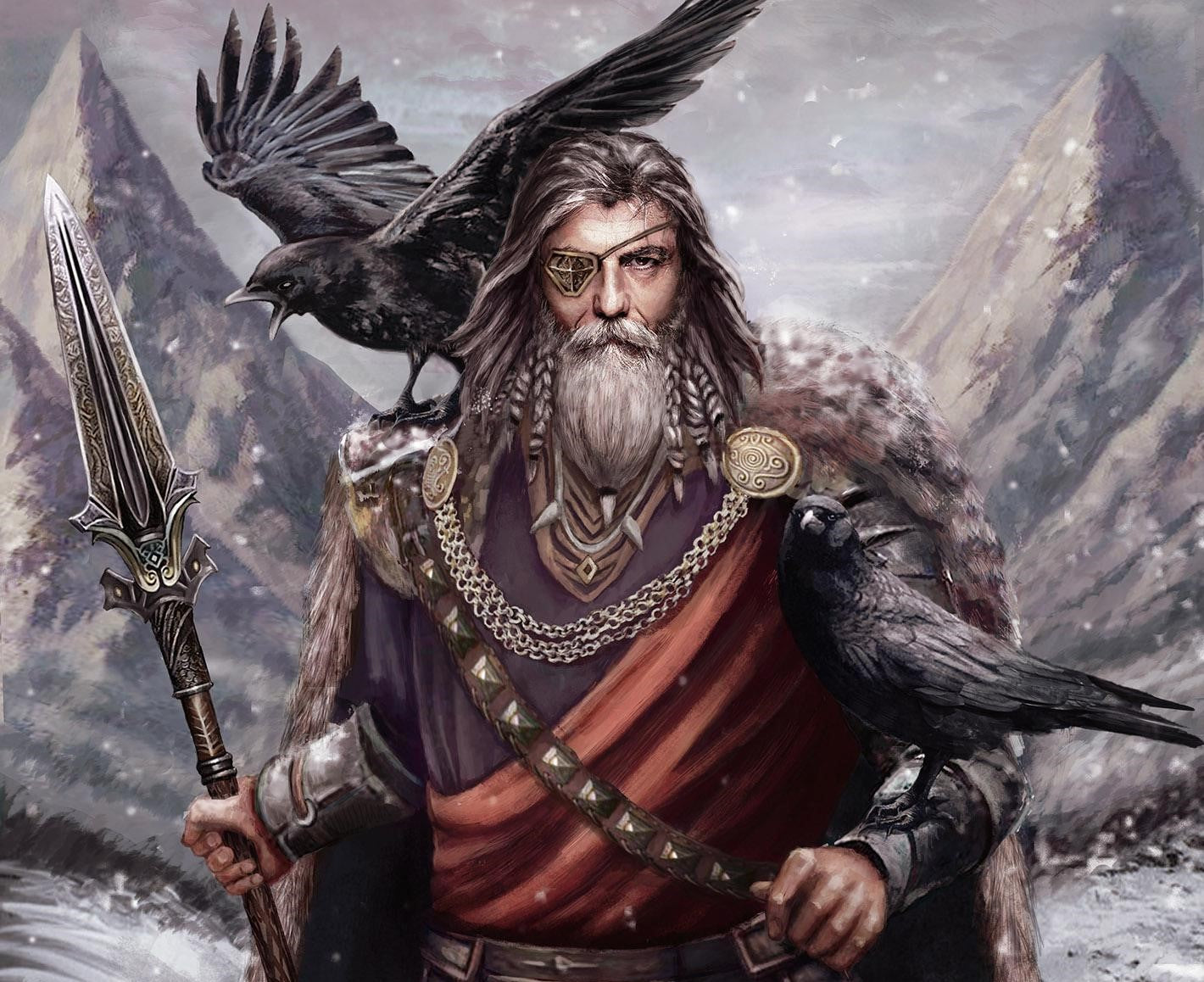Introduction to Odin
- Odin, also known as Woden or Wotan in Old English and Old High German, respectively, is a prominent figure in Norse mythology.
- As the chief deity of the Norse pantheon, Odin holds a central role in the mythological narratives and religious practices of the ancient Norse people.
Attributes and Symbols
- Wisdom and Knowledge: Odin is revered as the god of wisdom, knowledge, and poetry. He gained his wisdom through sacrificing one of his eyes at the Well of Mimir.
- War and Death: Odin is associated with war, battle, and the realm of the dead. He presides over Valhalla, the hall of the slain, where fallen warriors are honored.
Family and Lineage
- Parentage: Odin is the son of Bestla and Borr, and he is often depicted as the husband of Frigg, the queen of Asgard.
- Offspring: He has several notable offspring, including Thor, the god of thunder, and Baldr, the beloved god associated with light and purity.
Attributes and Symbols
- Ravens: Odin is accompanied by two ravens, Huginn (thought) and Muninn (memory), who bring him information from the mortal realm.
- Sleipnir: Odin is the father of the eight-legged horse Sleipnir, a powerful and mystical steed.
Role in Norse Mythology
- Quest for Wisdom: Odin's pursuit of wisdom and knowledge, including his self-sacrifice at the Well of Mimir and his acquisition of the runes.
- Valhalla and the Einherjar: Odin's role in selecting fallen warriors for Valhalla, where they prepare for Ragnarok, the apocalyptic battle.
The Valkyries
- Odin's association with the Valkyries, divine maidens who serve him by selecting the bravest of fallen warriors to join the ranks of the Einherjar in Valhalla.
- The Valkyries' role in escorting the souls of fallen warriors to the afterlife and their connection to Odin's martial and death-related aspects.
Influence and Legacy
- Odin's enduring influence on Norse culture, including his depiction in poetry, sagas, and religious practices.
- The portrayal of Odin in contemporary media, literature, and popular culture, showcasing his continued relevance and fascination.
Conclusion
Odin, the Allfather of Norse mythology, remains a captivating and multifaceted figure, embodying wisdom, war, and the mysteries of the cosmos. His enduring presence in Norse mythos and his portrayal in modern adaptations attest to the timeless allure of this enigmatic deity.








0 comments:
Posting Komentar